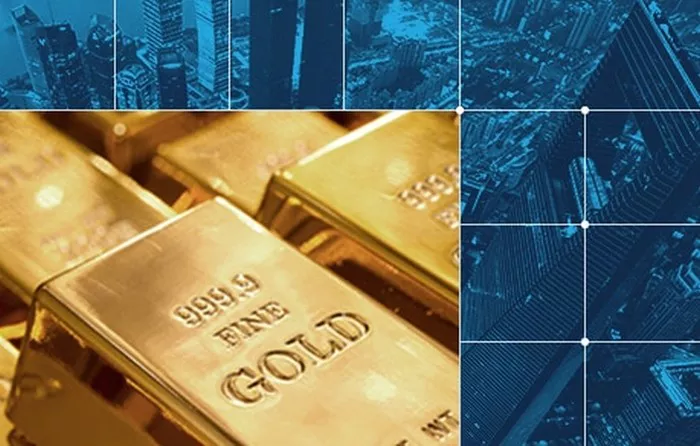Introduction
Silver has long been a precious metal of significant economic importance, used in various industries ranging from jewelry to electronics. As a tradable commodity, silver futures play a crucial role in the financial markets, allowing investors to speculate on its price movements. Given the volatility and the complex factors influencing silver prices, determining whether silver is currently undervalued is a multifaceted issue requiring a detailed analysis.
Historical Context of Silver Pricing
To understand the current valuation of silver, it is essential to examine its historical pricing trends. Historically, silver has experienced significant price fluctuations due to various economic, geopolitical, and industrial factors. For instance, the Hunt Brothers’ attempt to corner the silver market in the late 1970s caused prices to skyrocket, followed by a dramatic crash. More recently, silver prices spiked during the 2011 commodity boom, reaching nearly $50 per ounce, only to decline in the subsequent years.
Key Factors Influencing Silver Prices
Industrial Demand: Silver is a critical component in many industrial applications, including solar panels, electronics, and medical devices. The demand from these sectors can significantly influence silver prices. For example, the push for renewable energy sources has increased the demand for silver in photovoltaic cells, impacting its market value.
Monetary Policy and Inflation: Silver, like gold, is often viewed as a hedge against inflation and currency devaluation. Central bank policies, particularly in major economies like the United States, can impact silver prices. For instance, low-interest rates and quantitative easing tend to devalue currencies, making precious metals more attractive as stores of value.
Market Speculation: The futures market is heavily influenced by speculative trading. Large positions taken by hedge funds and other financial entities can lead to significant price movements. The commitment of traders (COT) reports often provide insights into the market sentiment and speculative activities in silver futures.
Supply Constraints: The supply of silver is largely dependent on mining production, which can be affected by geopolitical events, labor strikes, and environmental regulations. Moreover, a significant portion of silver production comes as a byproduct of other mining activities, such as gold and copper, making its supply somewhat inelastic.
Global Economic Conditions: The overall health of the global economy plays a crucial role in determining the demand for silver. Economic growth typically leads to increased industrial activity and, consequently, higher demand for silver. Conversely, economic downturns can reduce industrial demand and suppress prices.
Current Market Analysis
As of 2024, silver prices have been relatively stable but remain below the peaks seen in the early 2010s. Several indicators suggest that silver might be undervalued in the current market:
Comparison with Historical Averages: When adjusted for inflation, current silver prices are significantly lower than historical highs. This suggests that, relative to its purchasing power in the past, silver could be considered undervalued.
Gold-Silver Ratio: The gold-silver ratio, which measures the number of silver ounces needed to buy one ounce of gold, is a traditional metric used to assess relative value. Historically, this ratio has averaged around 60:1. However, in recent years, it has fluctuated between 70:1 and 90:1, indicating that silver may be undervalued compared to gold.
Supply-Demand Dynamics: Recent reports suggest that industrial demand for silver, particularly from the green energy sector, is on the rise. At the same time, there have been no significant increases in mining output, leading to a potential supply-demand imbalance that could drive prices higher.
Monetary Policy Trends: With ongoing concerns about inflation and potential changes in monetary policy by major central banks, precious metals like silver are gaining attention as inflation hedges. If inflation persists or accelerates, silver prices could benefit.
Investment Strategies in Silver Futures
For investors considering silver futures, several strategies can be employed to capitalize on potential undervaluation:
Long Positions: Taking long positions in silver futures is a direct way to bet on rising prices. This strategy involves buying futures contracts with the expectation that silver prices will increase over time.
Spread Trading: This involves taking simultaneous long and short positions in different silver futures contracts, exploiting price differences between contract months. This strategy can help mitigate risk while allowing investors to profit from price discrepancies.
Options on Futures: Options provide the right, but not the obligation, to buy or sell futures contracts at a predetermined price. Using call options can be a way to gain exposure to potential price increases with limited downside risk.
Hedging: For industrial users of silver, futures contracts can be used to hedge against price volatility, locking in prices for future delivery and ensuring cost predictability.
Risks and Considerations
Investing in silver futures carries inherent risks, including:
Market Volatility: Silver prices are highly volatile, influenced by a myriad of unpredictable factors. This volatility can lead to substantial gains but also significant losses.
Leverage: Futures trading often involves high leverage, amplifying both potential profits and losses. Investors must manage leverage carefully to avoid margin calls and substantial financial risks.
Geopolitical Risks: Silver mining operations are concentrated in certain regions, making the supply vulnerable to geopolitical tensions, regulatory changes, and other regional risks.
Liquidity Risks: While silver futures are generally liquid, extreme market conditions can lead to liquidity shortages, making it difficult to enter or exit positions without impacting prices.
Conclusion
The question of whether silver is undervalued is complex and dependent on a range of factors including historical pricing, industrial demand, monetary policy, and market speculation. Current market indicators suggest that there may be an undervaluation, particularly when considering the gold-silver ratio and rising industrial demand.
For investors, silver futures present an opportunity to capitalize on potential price increases. However, it is crucial to approach this market with a well-informed strategy, mindful of the inherent risks and volatility. By carefully analyzing market conditions and employing appropriate trading strategies, investors can potentially benefit from the dynamics of the silver market. As always, diversification and risk management are key components of a successful investment approach in the futures markets.



